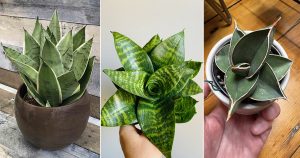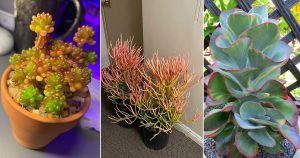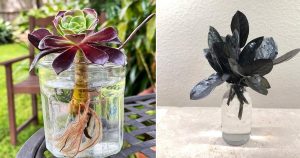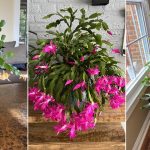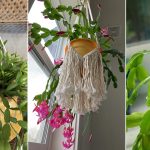Succulents are super resilient, and here are the best ones that can survive indoors all year round without sunlight.
So, you don’t have a garden or a sunny balcony. Does that mean you cannot grow sun-loving succulents? Not at all! They won’t grow as much under shade as they would under direct sun. Yet, here are the best succulents that can survive indoors all year without direct sunlight!
Top Succulents That Can Survive Indoors All Year Without Sunlight
1. Snake Plant
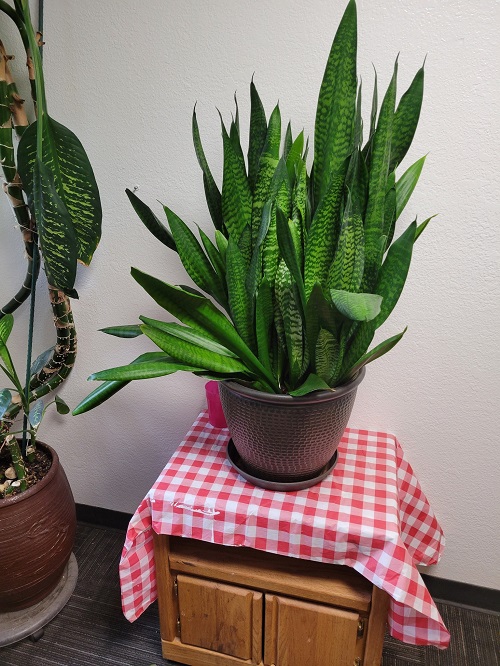
Botanical Name: Dracaena trifasciata
Snake plants are practically indestructible, and that’s a fact! What might surprise you even more is that they’re actually succulents. Now, no matter which species you choose within the Dracaena genus, whether with variegations or a classic one, you will find that they thrive when left alone.
Of course, the best part is that they can adapt to various light conditions. Just don’t tuck them away in a damp basement—unless you’re fine with them just surviving and not growing much.
They also act as natural air purifiers, which makes them ideal for bedrooms or closed rooms with little ventilation.
2. Burro’s Tail
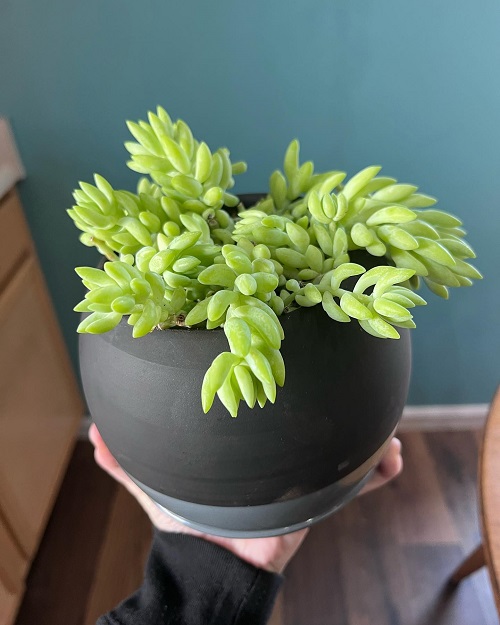
Botanical Name: Sedum morganianum
This succulent is rightly named after its long, dangling stems covered with light green, oblong leaves that look spiky from a distance. Since they resemble a donkey’s tail, they are also referred to as that, quite commonly.
It can do quite well in light shade, provided you take care not to overwater and have planted it in a well-draining succulent soil mix.
Place it high up—on shelves or in hanging planters—so its fragile leaves don’t get bumped. They fall off easily with the slightest nudge!
3. Panda Plant
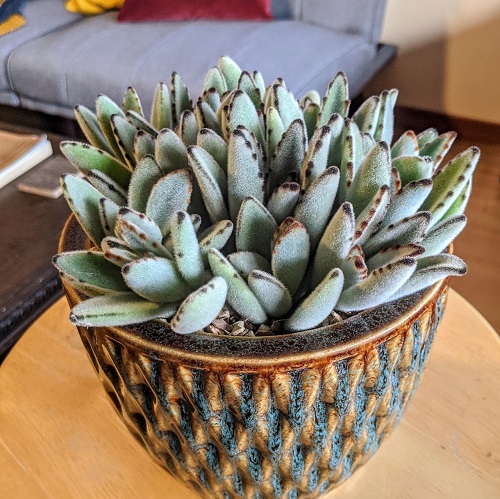
Botanical Name: Kalanchoe tomentosa
Looking for something unique? The Panda plant fits the bill! With fuzzy blue-green leaves dotted with brown on the edges, this succulent is meant to stand out in every collection.
The highlight is that the Panda plant does not mind shade. But there is one thing you must be mindful of, and that is that it gets thirsty faster than others. Water it weekly as soon as the soil dries out.
Because of its velvety texture, it’s also loved by kids, but be careful as it is cute yet toxic as well.
4. String of Hearts
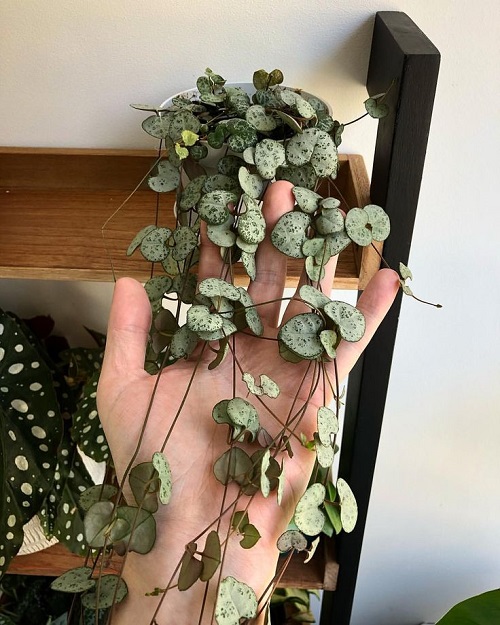
Botanical Name: Ceropegia woodii
Living up to its name, the String of Hearts is not just loved for its delicate trailing habit but also for its adorable heart-shaped foliage. The vines grow so long that you can practically make a green curtain out of them. Or simply drape them over shelves, totally up to you!
The perfect way to display them would be to make a second curtain out of them as they drape over curtain rods and trail down. They won’t mind the shade either!
If you notice leggy growth, it’s often a sign that they’re craving a bit more filtered light. A grow light can help indoors.
5. Ghost Echeveria
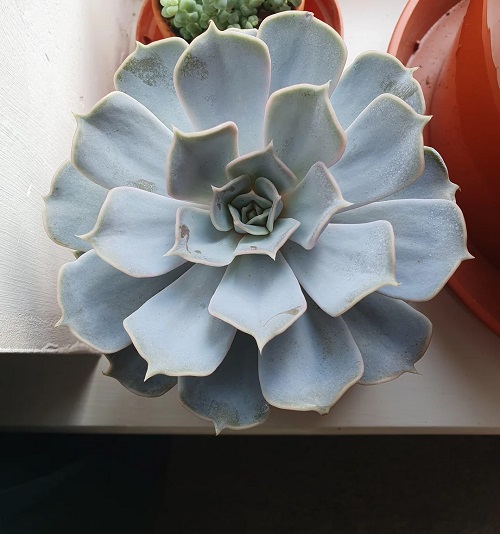
Botanical Name: Echeveria lilacina
Did you know that the Ghost Echeveria is also often called “Mexican hens and chicks”? Thanks to its flat, perfect rosettes with plump, silvery-gray leaves, this plant is often known as the “desert rose” too! It stores water in its plump, fleshy leaves, so, of course, you must water infrequently.
Plus, due to this ability to store water, it can tolerate low-light levels too. Just ensure you water it even less in such an environment!
6. Zebra Plant
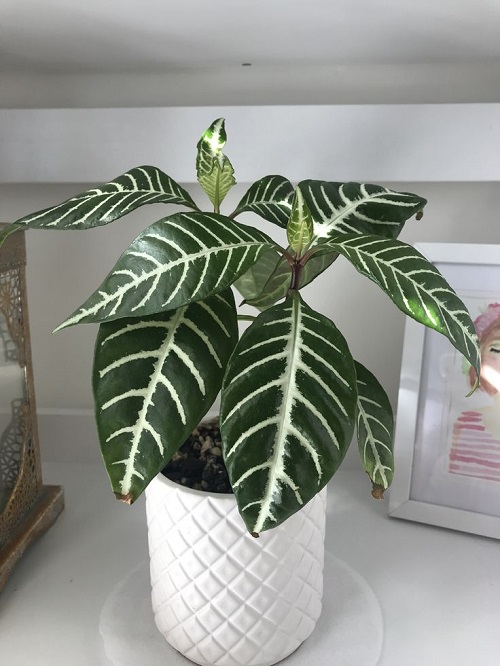
Botanical Name: Aphelandra squarrosa
One look at this plant and you will instantly know why it has been named so! Sporting white horizontal stripes over the green background of its pointy leaves, this interesting plant easily adjusts to various living conditions.
That, of course, includes low-light areas too. However, if you do manage to put it under full or even partial sunlight, you will see it thriving.
Do keep in mind that this plant loves humidity. If the leaves curl, try misting occasionally or using a pebble tray.
7. ZZ Plant
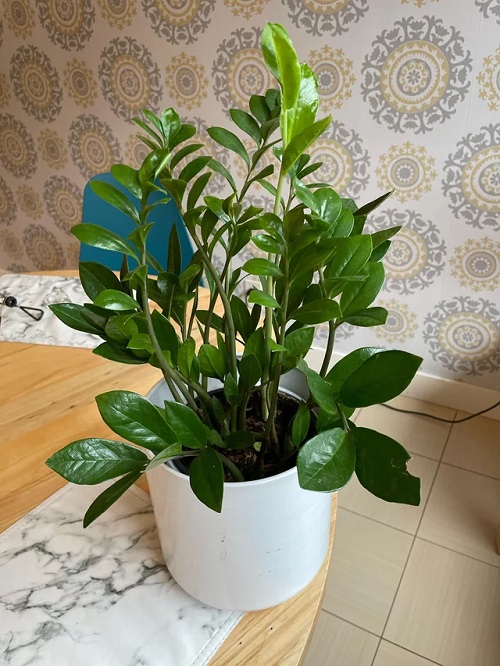
Botanical Name: Zamioculcas zamiifolia
Lauded as the plant that is practically impossible to kill, the ZZ plant thrives off neglect. It can store water for ages in its rhizomes, near its roots. So, if you forget to water it for weeks, no problem!
Additionally, if you don’t have bright windows, that hardly spells a problem for this plant either. Though growing ZZ plants away from sunlight means you might see slower growth.
It’s also one of the best low-light plants for offices and commercial spaces—it hardly demands any attention!
8. Aloe Vera
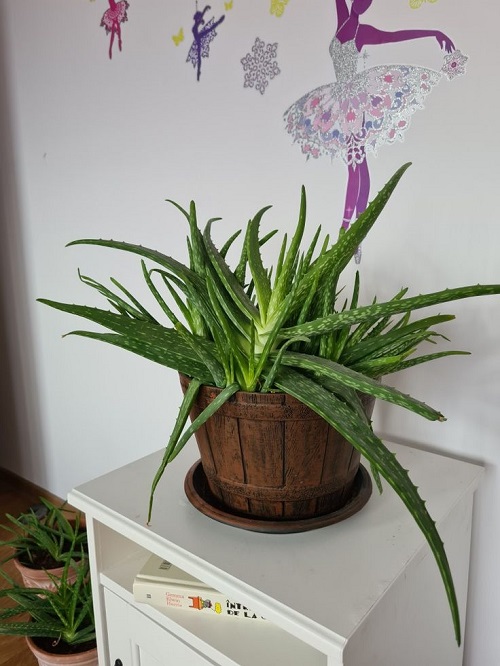
Botanical Name: Aloe barbadensis Miller
The quintessential succulent to add to every collection— Aloe vera is not just good for sunburns or cuts, but it is also a plant that you hardly have to worry about. In partially lit areas, aloe vera can survive pretty well without direct sunlight. However, if you want it to grow faster, you will need to arrange some supplemental lighting.
Note: Aloe vera will not survive in total shade. After all, it is a succulent! Rotate the pot every few weeks to keep its growth balanced toward the light source.
9. Ox Tongue
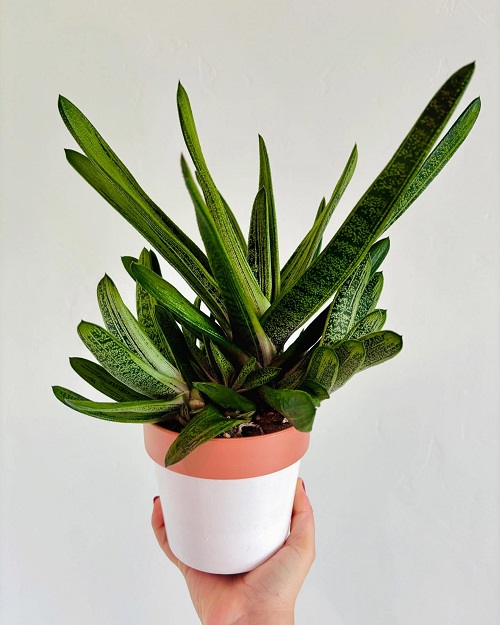
Botanical Name: Gasteria spp.
From a unique name to a unique appearance, Ox Tongue is one plant you must add to your collection if you want to make it more exotic! It boasts long, textured leaves that look like a swirling tongue at first glance. Plus, this succulent can even produce flowers when it’s mature!
Most importantly, it can survive in partial shade, though it prefers full sun.
10. Jade Plant
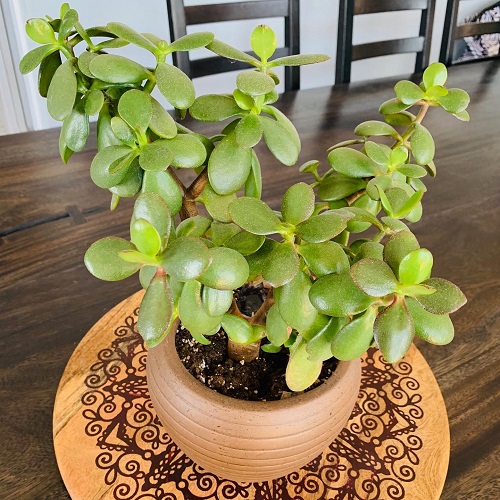
Botanical Name: Crassula ovata
If you are a firm believer in the Feng Shui philosophy, you will probably already have the jade plant in your home. Thought to bring good luck to its owner, the jade plant features beautiful plump, green, glossy leaves, and thick, woody stems. Having a thick trunk is all the rage for gardeners!
Besides not having to water often as it stores water in its leaves, the jade plant does well in most light conditions.
11. African Milk Tree

Botanical Name: Euphorbia trigona
The name can be a bit of a misnomer; the African milk tree is actually a succulent. It is not often heard of when speaking about household succulents, as the sap can often be toxic. So, people should wear gloves when handling this plant. The best part about this plant is that while its body looks like that of a cactus, its leaves remind one of succulents.
It can thrive quite well both in indirect light and partial shade.
12. Cylindrical Snake Plant
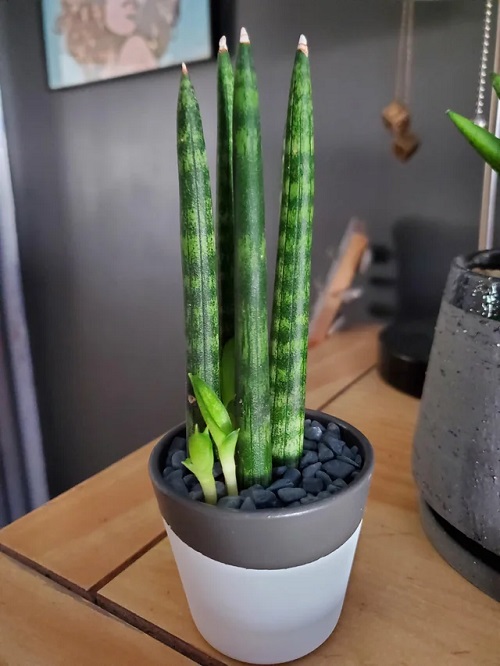
Botanical Name: Sansevieria cylindrical
And we are back with another snake plant (it deserved another mention!) Of course, this one is a different species, but it is also one that is quite loved by beginners. Super easy to care for, you only need to water it once a month. In fact, if you water it more, this plant can go into shock.
Also, as the name suggests, this snake plant species showcases cylindrical leaves instead of the flat ones you may be used to. Speaking of light, the cylindrical snake plant makes itself at home in any condition, including shade.
13. Bear Paw
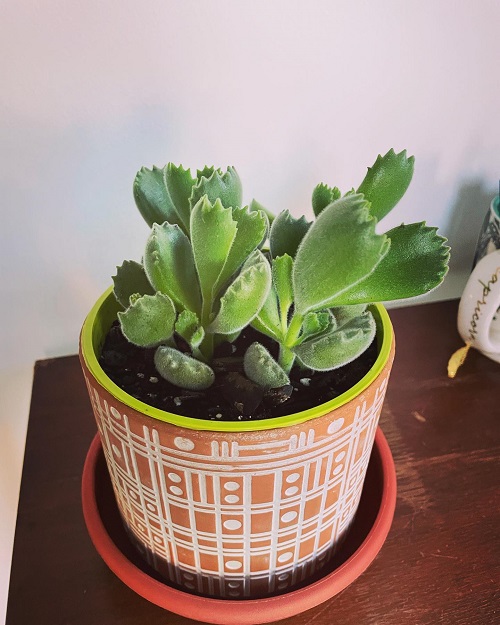
Botanical Name: Cotyledon tomentosa
The truly adorable Bear Paw features its classic plump, fuzzy leaves with raised tips that make it resemble the paws of a bear. These tips are even dotted with brownish-red, making it look extra special! Perfect for adding texture to your existing collection, Bear Paw can live pretty well in shaded areas. However, you won’t see its pretty orange flowers during spring unless it is under full sun.
14. Hens and Chicks
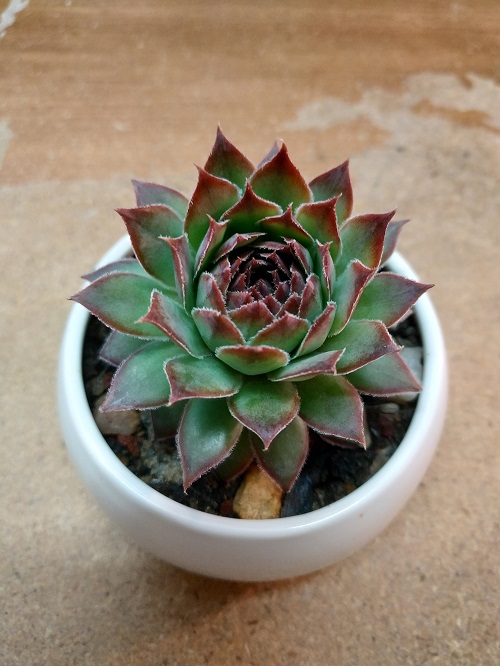
Botanical Name: Sempervivum tectorum
This succulent is quite famously deemed “low-maintenance” and that is hardly a surprise considering it does so well in drought conditions. But what gives the plant its unique common name is that the mother rosette, that is, the “hens”, is connected to its offshoots or “chicks” with very small, delicate roots.
These are often able to penetrate small cracks and thrive especially well in containers and even in rock gardens.
Though they typically require bright light to continue making “chicks”, you can grow them indoors too, as they will tolerate some shade.
If they stop producing chicks indoors, move them outdoors for a few weeks in mild weather to recharge their growth.
And that’s the range of choices when it comes to succulents that can survive indoors all year without sunlight! Which one are you planning to add to your collection? Let us know in the comments below!

